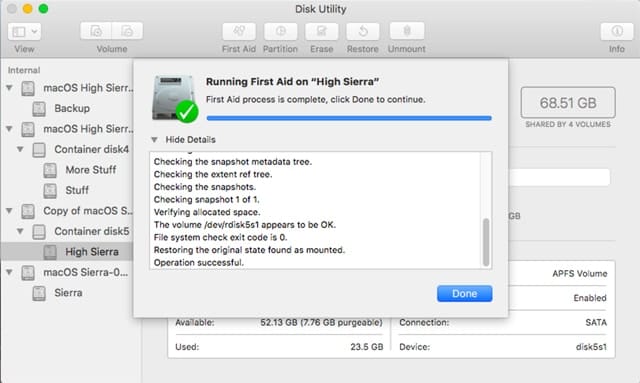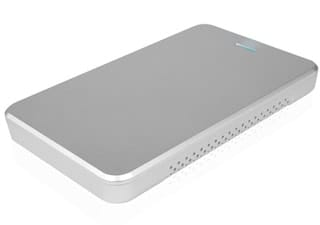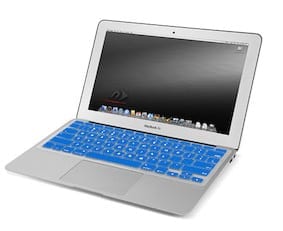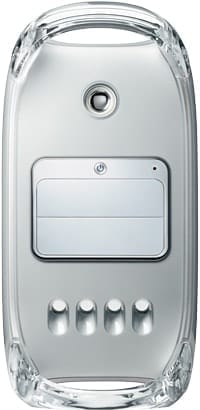Do you keep your Macs for longer periods of time than do most of your friends? I’ve been accused of hoarding my old Macs; for example, keeping an original 2006 Mac Pro running long after it should have been retired. The same is true of a 2011 MacBook Pro; I only need to replace the battery, which is no longer holding a charge, and it will be as good as new.
The point is, Macs routinely have longer lifetimes than most personal computers, and it only takes a few tips, a bit of maintenance, and an upgrade now and then to keep a Mac running well, and extend its usable lifetime well beyond the norm.
Keep Your Mac Clean and Help It Keep Its Cool
Keeping your Mac clean can help it run at lower internal temperatures, which can prolong its life by not putting undue strain on internal components. At one time, it was an easy task to open a Mac up and clean out the dust bunnies that had collected over time. Now, except for the Mac Pro and Mac mini, the inside of a Mac is somewhat difficult to get to. But you should still inspect your Mac to ensure none of the intake and exhaust vents are clogged by dust and debris. If you need a bit of help in cleaning the interior, check out the Rocket Yard Tech Tip: Have You Cleaned Your Mac Lately?

Once you have your Mac’s cooling system shipshape, don’t forget that when you’re actively using your Mac, its location can have an impact on its ability to keep cool. When using a MacBook, don’t place it on pillows or soft material that can block airflow. Likewise, with desktop Macs, make sure the position they’re in doesn’t block airflow.
As long as we’re on a cleaning spree, don’t overlook the keyboard, mouse, trackpad, and display. MacSales.com has a nice collection of cleaning products that will help keep these peripherals looking good and working well.
Perform Routine Maintenance
Routine maintenance can do a lot to extend the life of your Mac. It not only can keep everything operating in top shape, but it can also help find possible trouble spots before they start severely impacting you or your Mac.
Disk maintenance is often overlooked even though it can find, and in many cases, repair issues before they become problems. Disk Utility has long included a Disk First Aid feature that can be used to verify and repair problems. Running the First Aid tool regularly can help keep your drives performing at their peak, as well as let you know when problems are beginning to appear.
Another maintenance task that can be run to keep your Mac in good shape is Safe Mode, a special boot environment that will run a few tests as well as delete font, system, and kernel caches that can cause some very strange behavior when any of them become corrupt. You can find out more in the Rocket Yard guide: Safe Mode & Single-User Mode: What They Are, How to Use Them.

Upgrade Hardware
Over time, your Mac’s hardware may seem to be slowing down; more likely, you’re just using a lot more of your Mac’s resources than when you first got it. One way to help alleviate the slowdown is to increase the resources available to your Mac: more RAM, larger disk storage, or perhaps faster storage. All or some of these can speed up your Mac, giving it a longer usable life.
RAM upgrades: I try to buy Macs that have user-upgradeable RAM, but this isn’t always possible, especially when Apple has soldered the RAM directly to the Mac’s motherboard. However, you may be surprised to learn that even some Macs that don’t provide easy user access to their internals still have RAM that can be upgraded.
When I need to upgrade my Mac’s RAM, MacSales.com’s memory guide is where I look to see what upgrades are available, and in many cases, view the upgrade video that may be available for a specific Mac model.
Storage upgrades: One of the best upgrades that I’ve performed for many of my older Macs is to replace the rotational disk drive with an SSD. This type of upgrade can really put the spring back into your Mac, and remind you of how impressed you were with your Mac’s performance that first day you brought it home.

Even if you have a more recent Mac with an SSD already installed, increasing the SSD size can be helpful, and the old SSD can be put into an external enclosure for additional storage.
You can use the MacSales.com SSD Flash Storage Upgrade guide for information about the SSD you need for your specific Mac.
Another storage upgrade option is to use a fast port, such as Thunderbolt 2 or Thunderbolt 3, to connect a high-performance external storage solution to your Mac. This lets you enjoy the benefits of faster storage without having to take your Mac apart to replace disks. It also provides the possibility of building high-performance RAID storage systems to meet your particular needs.
Battery Care and Maintenance
If you’re using one of the MacBook models, then you probably already know that the battery that keeps your Mac running when not connected to the mains is often cited as the reason for replacing the Mac.
The usual complaints are that the battery no longer holds a charge, won’t accept a charge, or when charged, has a very short runtime, perhaps an hour or less.
The solution to this type of battery problem is to either have the battery replaced or to replace it yourself.
But we’re getting ahead of ourselves. Batteries are considered consumables; they have a limited lifetime and are expected to fail at some point. Apple’s battery guidelines state that batteries used in the MacBook product line should retain 80% of their original capacity after a set number of charging cycles. The actual charging cycle or cycle count varies depending on the specific battery. You can find out more about how to check a battery’s cycle count, as well as how to check up on the MacBook battery’s current condition, in the Rocket Yard guide: Tech 101: Checking Battery Health on a MacBook.
Even though you know the battery will eventually fail, there are quite a few steps you can take to prolong its life:
Avoid temperature extremes: MacBook batteries generally have a preferred ambient operating temperature between 50° F and 95° F. Using your Mac on cold days can result in a temporary reduction in battery performance. Using the battery when the temperature is above 95° F can lead to a permanent reduction in battery performance. Charging the battery when the temperature is above 95° F can cause further damage, reducing the battery’s runtime.
The MacBook battery also has a storage temperature limit of -4° F and 113° F. At colder or hotter temperature extremes, the battery can undergo permanent damage, even when not in use.
That’s not to say the MacBook’s battery is going to fail because you took your MacBook to the ski resort; just don’t take it outside on really cold nights. Likewise, Death Valley in the summer may not be an ideal place for your MacBook’s battery.
Battery storage: If you don’t plan to use your MacBook for a long time, it’s a good idea to have the battery at around a half charge and then power the Mac off; don’t leave it in a sleep state. This can help prevent a deep discharge from occurring, which can adversely affect the battery’s ability to hold a charge later. A half charge is the safest condition for the battery to be in when storing it for any lengthy-time period.
Exercise your MacBook’s battery: You may be tempted to always leave your MacBook plugged into house current. This isn’t a good idea since keeping the battery at a full charge for an extended length of time can lead to an overall capacity loss and a shorter life. Instead, use the battery as it was intended: to power the MacBook from time to time.
Maintain Software With Updates
Keeping your software up to date can help keep your Mac operating in top condition. It may be that you’re happy with the version of the Mac OS you’re using now, and have no need for any of the new features in subsequent versions. But updating your system usually brings new security and performance fixes that may help extend your Mac’s lifetime.

System updates have also, on occasion, poorly impacted older Macs, so the decision to upgrade is a bit of a tossup. I’ve always tried to keep my older Macs at the latest version of the operating system they support.
There are valid reasons not to upgrade, such as the need to use an app that is not supported under a newer version of the OS. So, the best thing is to do a bit of research before deciding whether or not to upgrade to a newer OS.
Back Up Regularly
The last suggestion for extending the life of your Mac is to understand that at some point, a failure may occur, or an upgrade to a newer Mac will be required. Having a current set of backups as well as archives of important data will make the change an easier one.
Stop by the Rocket Yard article How to Create a Robust Backup System in Three Phases for some suggestions on backup strategies.
How Old Is Your Mac?
If your Mac has a few years under its belt, let us know what year and model Mac you have, as well as how you’re using it, and any upgrades or repairs you’ve performed to extend its useful life.
For more tricks and guides for macOS Mojave, High Sierra or earlier, check out our Tech Tips section.










Hey, I purchase a a 2010 Mac Mini running on 4GB Ram and A 320 GB HDD of course with a Core 2 Duo Processor. Can u tell me some tips to extend its life and hopefully run it for a long time?
This is a very valuable Blog for beginners. People all over the world are taking advantage to create blogs. This is a very informative blog for me, thank you for sharing this blog.
Visit Us-https://www.truviconline.com/
Thank You for sharing this information with us. It’s really very helpful.
I highly appreciate your hard work.
I have a mid-2009 13″ MBP and a mid-2009 14″, both running El Capitan.
I replaced the HDDs in both with SSDs and maxed out the RAM in both and that has been a game changer for each. Huge gains in speed and performance.
In the 13″ I also swapped out the Optical Drive for another SSD for added storage capacity. I run the OS off the main internal SSD, and the optical drive bay SSD is for all the extra files (photos, music, etc). This has worked out great. I did this in my other 2012 MBP 15″ and it’s be awesome.
The problem I’m running into with the 13″ mid-2009 MBP is the battery. It was crap. So I replaced it with a new battery from OWC. But the new battery only lasts 2 to 2.5 hours max, even when I’m just using basic programs like FireFox and Evernote. I’m also not running a ton of extra features. I do have the Evernote Helper always on and Box.com Drive running.
Is there a way to fix this? Thoughts? Ideas? Bad battery? Internal setting? Is it the extra SSD sucking extra RSS?
Any help is much appreciated! Thanks!
Hi Matt. Our batteries are designed to last anywhere from 3-5 hours on a full charge, depending on use. If you are not seeing this life span, there are a few things we would want to do to see if we can get the battery working properly for you.
The first thing I would recommend doing would be resetting the SMC, detailed instructions on performing a SMC reset can be found on Apple’s website here: https://support.apple.com/en-us/HT201295
After resetting the SMC, I would also want to perform a NVRAM or PRAM reset.
PRAM Reset:
1) Start the machine while holding down the Option-Apple-P-R keys
2) Wait until you hear the 3rd startup chime, then let go of the keys and let the machine boot up.
Lastly, we would want to go through a proper conditioning cycle, to help the battery reach its maximum lifespan. This process will help calibrate the battery and extend the full charge life. You can find this process with detailed instructions on our Battery Conditioning Guide: https://eshop.macsales.com/Tech/manuals/newertech/batteries/batteryconditioning_r1w.pdf
If these steps fail to work in getting your battery performing up to specs, please reach out to our Technical support team!
Hey yea so I did all this (including several conditioning cycles – though not consecutive), and I still can’t get it to last more than two hours :(
Technical support?
Yes, definitely reach out to Tech Support on this!
Hi – I love my MBP (2.8 GHz w Intel Core i7) – purchased in 2007 and would like to hold on to it as long as possible. I have upgraded to 16 RAM and put in a 1T SSD. It is currently running High Sierra version 10.13.6.
My concern is that although it runs great, I need to update several softwares I use (including quickbooks) as the new versions will not work with High Sierra.
Can this version of a MacBook successfully run Catalina?
Unfortunately not. Here is a list of Catalina Compatible Macs.
Hi
My boss has asked me to look at his old MBP to see what we need to do to keep it running for a while longer (and whether we need to start thinking about a replacement) I’m surprised how well it’s running for a 10 year old computer.
It is a mid 2009 15″ MacBook Pro,
2.53GHz intel core 2 duo
8G RAM
Most surprising is the battery cycle count, it’s still on the original battery and the cycle count is only at 487 after 10 years. Full charge capacity is 4995 mAh, not quite like my own 2016 MBP which has a capacity of 6846mAh, but not too bad.
It’s running El Capitan, and it seems that it cannot take a more recent OS. But nonetheless it is going well with El Cap, with no significant performance issues.
Disc first aid showed no problems either, so aside from taking it apart to blow the dust out, there’s not much more I can do, maybe a new SSD could help. I reckon it easily has another year left in it :) The only hurdle will be software that doesn’t work on El Capitan.
Hi Matt,
It’s always great to hear stories like this!
If you are interested in upgrading to an SSD, the OWC Mercury Electra 3G would be a really great option – and they are super affordable.
Also, you should be able to upgrade the memory of that model to 16GB as well. That would give you a bit more punch!
I have a Mid 2010 15″ MacBook Pro.
2.4GHz – i5
8G RAM, 1067MHz DDR3
NVIDIA GeForce GT 330M 256MB
It is currently running perfectly with El Capitan 10.11.6
I feel it will soon be outpaced by software I need to update and the system won’t support it. It also appears there are no OS updates beyond where I am now.
Is this Mac worth upgrading somehow or just celebrate it’s 10 year excellence as the best I can expect and get a new one?
Thanks in advance
mid 2010 27″ i3 iMac here. Occasional slow down issues, but hard restart (if that’s the correct term) get’s it going fine again. Stock RAM and HD. Looking to update both. Just checked on updating, but Apple says ‘no updates’ available. Not at El Capitan. I’m not dissatisfied with performance, so no reason to buy a new unit. The only reason I got on this thread is I got a Pages doc that I couldn’t open with out upgrading to Mojave and then updating Pages. A question I do have is – would it be worth it to get a new Mac Mini and tie it into my existing iMac? Or is that even possible?
I ordered my 17″ Matte Screen, MacBook Pro the day AFTER Steve Jobs EOLed it (late June, 2012). Upon receipt, I upgraded the OEM 4GB of RAM to 16GB of RAM. At that time, I kept the 750GB, 5400RPM HD. A few years later, I upgraded to a Sanyo 1TB SSD. This MBP is my primary computer. I regularly use the DVD SuperDrive, USB2 ports and headphone port. I occasionally use the Firewire800 port (usually to connect to external drives) and, I have ExpressCard34 cards that add USB3 and eSATA capabilities (both of which I’ve used). I replaced the battery last year (iFixIt battery was problematic; Newer Technology works much better but, still doesn’t give the run time of the OEM battery. I DID try to buy an Apple battery but, was unable to do so). I LOVE the 17″ matte screen and the MagSafe power connector. I will keep this workhorse as long as I can. Once it is finally no longer viable, I expect I’ll switch to a LARGE screen (17″ or bigger) Windows laptop and, switch to Windows OS or, install a Linux flavor. Apple seems to be VERY out of touch with the users who have been its’ core supporters. Very sad.
My iMac is from 2006 and heats up and the becomes non responsive. Quickly.
A couple times powered up to a blank screen.
I am so pleased to see these stories of other old Macs still running! I have been contemplating replacing my Mid 2010 Macbook Pro due to slow speed and running out of storage space. But it has literally been the best computer, so I’m now considering instead just upgrading the RAM and buying an external HD to free up some space.
I have a MacBook (13-inch, Mid 2010). I have replaced the battery once. It should have been replaced sooner but no local stores carry it. The nearest Apple rep would only do it after a pricey diagnostic service. I bought the tools and it was easy to replaced.
The only other thing I have done is upgrade the RAM from 2GB to 8GB. That is the highest I can go but it made a HUGE difference. My MacBook runs faster than the PC I use at work and faster than my husband’s Acer.
I have thought about replacing the hard drive but it works fine for my everyday use.
I bought this MacBook to replace a Toshiba laptop that died after one year. I’ve had to use time machine once to restore my machine. Other than that, it has been smooth sailing.
I have a 27″ late 2009 iMac. just upgraded to 16 GB of ram still happy plus also purchased the Matius extended USB keyboard, very happy with that as well. I do have 1 TB in an external storage device. I do run Parallels as a matter of course. I would love a good speech recognition program for my writing. the dictation function really doesn’t cut it. would love to get some more processing power but that seems unlikely. Very happy with OWC
cheers,
I’m still running my mid 2010 Mac Pro 12 core, 64GB ram, two 1TB SSD drives and a 4TB SATA Drive. I’m still using the original ATI Radeon HD 5870 graphics card. Although I’d like to upgrade that and some of the other old components. The system still runs like a champ after 8 years and I’d like to make it to 10, but we’ll see how it handles this next OS. I’m keeping my fingers crossed that Apple stops ignoring the creatives and actually produces a modular mac pro that all of us want and need. Otherwise, after 22 years of illustrating on a Mac, I think I’ll be switching to a PC and moving away from the Apple platform to google based cloud services. It’s just a wait and see at this point, but after 5 years of Apple ignoring the needs of creatives, I don’t have much hope that they will put the effort in to support the people that kept them going in the 90s.
Late 2009 iMac, 3.06 gig Core 2 duo, 21.5″ screen. Memory maxed at 8 GB, just installed 2 TB HD. Email, web crawling, spread sheets (Excel – Office), podcasts. Eight years and going strong. I also have a G5 PowerPC that is clumsy to use due to obsolete browsers. I do use it for audio podcasts.
I have several Macs from the 90s still in good working condition:
1999 Blueberry iMac 350 used for educational/homeschool software;
1997 PowerMac 8600/250 used for old graphics software including Photoshop 7;
1993 LC520 used for System 7 arcade games.
Have a 9-yr-old laptop—last one to have an internal DVD player. Can no longer use latest macOS. I use it on vacation for email & playing DVDs. Has 120GB SSD & I’ve replaced the battery. Main machine is 8-yr-old MacPro with 480GB SSD, plus 3 internal HDs, 5w0 2TB & one 3TB. Is using High Sierra & has 64GB RAM..
I love the old Mac Pros. My current daily driver is a Mac Pro (Mid 2010). 3.33 GHZ 6 Core Intel Xeon. 32 gig RAM. Two internal SSD’s. Super Drive works. Four internal HDD’s. Multiple external drives, multiple USB hubs…. it’s just a great computer. Running all the newest versions of everything, High Sierra 10.13.5.
My music machine is a 15″ G4 Flatpanel from 2002, those active Harman Kardon speakers are still wonderful after all these years. My daily drive is a 2012 MacBook Pro, complete with optical drive, USB ports, SD reader, thunderbolt and video out (all the things a laptop should have) :-). I have swapped the hard drive for a 1Tb SSD and increased the RAM to 16Gb (all from MacSales). The machine works fine and has never had a problem. Software is a different matter, I still run OS Sierra since High Sierra doesn’t support my version of MS Office, and I refuse to move to MS’s newer cloud-based subscription model.
I have a G5 pre Intel
Here’s the background. I have a 15″ MacBook Pro late 2008/early 2009, 2.66 GHz Intel Core 2 Duo, model 5,1. A year ago, the HD died. So I decided to try to resurrect it for about $500 rather than buying a new MBP for about $3000 or more, do the work myself, and maybe get a few more years out of it. That wasn’t a lot to lose since it was essentially dead anyway. So I maxed out the RAM to 8 GB, replaced the HD with a 1TB SSD, and replaced the battery (OSX said it was bad) with a MacSales battery (but only lasts 1-2 hrs doing ordinary Internet, MS Word and Excel stuff). Other than the battery life which I can live with, what a kick in the pants on performance–better than when new! Couldn’t be happier…..well, yes I could be happier with respect to OSX. Now here’s the issue. Apple says that you can’t install an OSX past El Cap on that MBP. Is that true? Or is there someway to get past that to install a later OSX like Sierra or High Sierra? And if there is, would there be adverse side effects?
2009 24″ iMac. 500 gb SATA, 16 GB RAM. This thing just won’t die. Web surfing, email, and a back up for my Mac Pro 5,1.
I’m at a crossroads with my MacBook Pro (15-inch, Early 2011). I can definitely upgrade the RAM from 8-16 GB, which hasn’t been done. I can also upgrade to an SSD Drive. But how much performance will I gain and how much longer will it last with software demands? I’m a graphic artist and photographer, heavily use Adobe Photoshop, Lightroom, and InDesign apps amongst others. It’s not my main system but I do like to use it somewhat regularly – although that’s becoming more and more difficult with its sluggishness. Should I do the upgrades or sell it for what I can and look into something newer? Can’t really afford a new system right now but I’d rather invest my money down the road if upgrades aren’t going to cut it. Appreciate any advice.
Hi, Erik. You will see a significant increase in performance when going from HDD to an SSD, and upgrading to 16GB of memory. Our tech support team can discuss this more in-depth if you would like to reach out. Thanks!
Jarrod, that’s good to hear. I was concerned that this model not having the “better” video card than the 2012 model might be an issue – as told by a local mac repair shop. I’ll definitely contact tech support to configure the best options. Much appreciated!
Would I get a similar performance upgrade for my mid-2010 Macbook Pro?
I ended up updating to Sierra OsX. I feel like it was maybe a mistake and too much for the hardware. Do you have any insight as to OS, is reverting to an older version better?
Overall it runs pretty well, and I’m considering upgrading to an SSD drive if that would improve performance speed and reduce crashes. I have 8GB of memory but I feel like the hard drive is more useful to upgrade at this point?
The 2010 MacBook Pro should not have any real issues with macOS Sierra. So I don’t think you need to downgrade unless you are having issues with specific apps.
An SSD upgrade would give your MacBook Pro a spring in it’s step. It is something I have done for all of my Macs that were orginally equipped with spinning hard drives.
Tom.
What advice would you have to determine why a Mac Mini is overheating?
Can low RAM cause overheating?
I have a 2010 iMac 27inch, which for six years used for promoting music, publishing magazines, so, heavily used with Photoshop, Indesign and audio software. In 2015 decided to change the hard disk, thinking there’s going to be a time when the original would fail. That year purchased a new iMac 27inch i7 and maxed out the memory.
Using the original iMac for music production now, with Cubase & Komplete software, plus various plugins, it still performs faultlessly. Before the iMac’s I had a G4 Power Mac for ten years, only replacing the hard drive & dvd drive, gave it to my father who used it for a couple years before giving it away still working to a friends young son.
I had a 2006 Mac Pro that I used until it would no longer support the latest OS, maybe about 2014. Was still happy with it, but I am uncomfortable not having current OS and apps, mostly Photoshop and related apps. I could only plug and play as a replacement into my setup a MacBook Pro, or a Mini. (The issue is an external monitor that serves two machines.) I opted for the MacBook, but wasn’t happy with it, so got a loaded Mini. It doesn’t quite do the job. It sounds as if the new Pro, if it ever is released, is going to have a $10K price tag, which I cannot justify. I can keep an older Pro going fine until Apple makes the OS unusable. All this makes a return to Windows, which I really don’t want to do, more and more attractive. Any thoughts, recommendations, suggestions most appreciated.
Windows is a high price to pay, beginning with the essential $50 a year Anti-virus software subscription. These days you don’t need a hypothetical Mac Pro to get high performance. Even the currently available iMac Pro is overkill for most people. A regular 5K iMac is all the computer all but the most demanding of users will need for years to come. Of course no computer will last forever, given improvements in technology and software. Complaining about those improvements is shoveling sand against the tide; though, for some people, complaining never gets old. I guess, like an old computer, it’s a way of life.
I’ve got no objection to old computers; I use them for years, until they will no longer support the current OS.
The new iMac looks great; my only objection to it is that you can’t get to the monitor input in order to connect a second CPU; I need to use a Windows machine as well as the Mac, and don’t have the space for two monitors. Tried Parallels, but found it’s use & maintenance more frustrating than switching back and forth between two machines.
I’m a motivated buyer; just wish I knew what to buy!
MacBook Pro Retina 15″ mid 2014
Tried to update Solid State Memory card, however it was a ‘nogo’ !
I have a 2011 iMac, I upgraded the RAM from 8 to 24Gb and replaced the Hard Drive with a 1 Tb SSD, both supplied by Macsales. The performance increase was truly amazing and has really extended the life. The only single item that bugs me is being unable to upgrade the Thunderbolt1 to 2 or 3. I run two Lacie 2Big units daisy-chained off the Thunderbolt and really wish access could be faster. Still an impossible wish but will be the reason I eventually upgrade the Mac.
Sorry that should be “not being able to upgrade the Thunderbolt”
I have an early 2008 MacBook Pro. I have put in a 120 GB SSD drive, with 4GB 667 MHz DDR2 SRAM, and am running OS X 10.6.8 (I have some apps that won’t run on anything later). I also always sit the machine on a Chillbed laptop passive cooling stand (the company seems to have stopped trading. I probably should get an active stand).
I also have several Mac Pro Towers and a mid-2011 iMac 27 running later OS X versions (Lion to Sierra) all with big SSDs and lots of memory; and an early 2009 Mac Mini (with a superdrive, a 320GB HD and 8GB RAM) that I use for watching programs online on my big-screen TV unit.
Thank you so much for the great info in the Rocket Yard. I may be missing it but a print button, along with the Facebook, Email etc, would be a great help. I print, and save as a PDF doc, a lot of these articles and keep them for future reference. Thank you, Mike
I have a Mac G5 Quad Core PowerPC. In fact, the last PowerPC G5 Quad that CDW sold (2005). I was going to recycle it in 2010 when it couldn’t keep up with the demands of our office environment. I bought a 27″ iMac and was unimpressed with its performance. At the last minute, I pulled the G5 back and decided to try an SSD. What a difference! I still use it every day and get fresh toast and hot coffee off the beast!
LOL…me too. I just couldn’t part with the beast and still like the snow Leopard OS anyway. I just use it as a file server now for all the docs and install files for older apps and gear. But it auto boots every morning and still runs like a champ at 12 years old.
mid-2009 MacPro4.1, working fine, but now told by Intuit that 2017 is last year they will support El Capitan and I need to upgrade to Sierra or High Sierra. Apple says no, I can’t upgrade. This planned obsolescence is killing me, $2K at a time.
Update the video card to at least 1 GB, then you can upgrade the OS.
It needs more than a video card upgrade. The old Mac Pros have motherboard limitations that won’t work past OS X 7 Lion. I know, I have one.
That’s what I ran into.
What OS will the latest Mac Pro tower?
Ditto the latest MacPro silo?
Right now running several older iMacs and a MacBook Pro in our home both for home-based business and personal use, so they are getting lots of run-time. The macs run from a 2007 20″ iMac to a 2013 MacBook Pro. Of the five we have running, only one is currently out of commission, a 2008, which I hope to get up and running again soon. All have maxed out RAM, and all have an OWC SSD installed. The only limitation is screen size on the two 20″ iMacs.
I started OS9 days with a grey blue g3. I upped the memory to max and it wasn’t enough. I then got a G4 and again maxed out the memory, I am not doing *ANYTHING* requiring that much memory, When the G4 died I was convinced to get a G5 and again I maxed the memory and I was still paging. When the g5 died and there was no real workhorse available for a year or two maybe more I had no option to go with an high-end IMAC. For the first year it was OK then after upgrading and upgrading the OS ‘s. It seemed every 6 months and then the damn patches. My IMAC has really hit rock bottom and I am almost to the point of chucking it all and going back to windows. One of the latest bugs is that Apple seems to set up Apple mail not to recognize attachments which cost me an extra 2 hours of work aday, Apple’s tech said update to high sierra. Now I am finding out unless you are a tech heavy you can’t back HS out. I think I am going to stick where I am forever.
If you think running Windows is any less trouble, think again. I agree the Mac is less than it ought to be these days. But you won’t find any Windows machine to be much of an improvement. To begin with you’ll need a $50 annual Anti-virus software subscription. Then you’ll need to replace all your software. And finally, there’s the issue of system maintenance. It’s just not as easy on a PC. There are no Windows equivalents of DiskWarrior, TechTool Pro, iDefrag or any other routine Mac maintenance tool. There’s no Single User Mode to check system and hardware settings; there’s no Recovery HD to boot into for troubleshooting. There are expensive third-party options the offer to “fix” numerous problems, if you can trust them. So move to Windows if you like, but caveat emptor.
2010 Macbook Pro, Still in fine shape. Replaced memory, hard drive(with SSD), Superdrive, and battery.
MacBook Pro mid-2011: Replaced Logic Board, new SSD, maxed out memory. Now, the track pad is going bonkers, and out of control. Tried wireless mouse, got improved response, but still acting up all too often. Apple tech can’t help. Time to change the logic board again??? ;-//
Just replace the trackpad, they’re notorious for going out and moving erratically. No need to replace the logic board though. Or you can enable “ignore built in trackpad when a mouse is connected” option in system preferences to bypass it entirely.
Devon,
When I connect a wireless mouse to the MacBook Pro, it still acts erratically, though not as severely or frequently. Would replacing the trackpad address this?
Where could I find a trackpad??
mid-2011? My wife’s had trackpad problem. Research revealed that it is a swelled battery issue – the battery is located beneath the trackpad and pressure from expansion messes up trackpad. I changed her battery and no problem any more! Battery swelling could be dangerous, so I’d at least check it out.